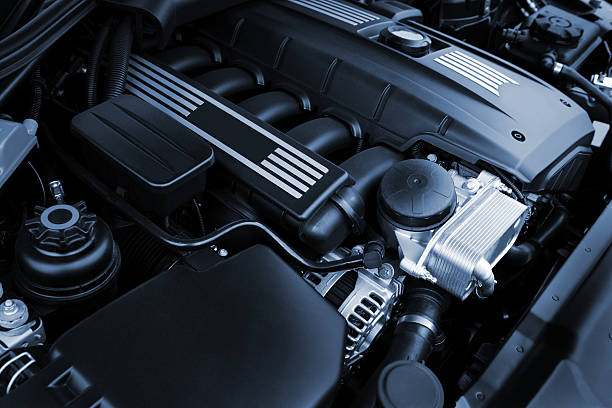2018 Chevrolet Silverado 1500 — Essential Guide to Specs, Trims, Performance, Towing and Safety
The 2018 Chevrolet Silverado 1500 stands as a versatile full-size pickup combining rugged capability with modern refinement. Whether you're hauling heavy loads, towing trailers, or navigating daily commutes, this truck offers a range of configurations to match diverse needs. With multiple engine choices, trim packages, and advanced safety technologies, understanding what this model delivers helps potential buyers and current owners make informed decisions about features, performance expectations, and long-term ownership considerations.

The 2018 Chevrolet Silverado 1500 represents a mature iteration of Chevrolet’s flagship pickup, blending traditional truck capability with contemporary comfort and technology. This model year arrived near the end of its generation cycle, offering refined engineering, proven powertrains, and a wide selection of configurations designed to accommodate work and lifestyle demands. Understanding its specifications, available features, and real-world performance characteristics provides valuable insight for anyone considering this vehicle.
What Are the Quick Overview and Key Specifications?
The 2018 Silverado 1500 comes in multiple cab configurations including Regular Cab, Double Cab, and Crew Cab, paired with either a standard or short bed. Wheelbase options range from 119 inches to 153.7 inches depending on configuration. Curb weight varies from approximately 4,500 to 5,300 pounds based on trim and equipment. Ground clearance typically measures around 8 to 9 inches, providing adequate off-pavement capability. The truck rides on a fully boxed steel frame designed for durability and load management. Standard features across most trims include air conditioning, power windows, and a rearview camera, while higher trims add leather upholstery, advanced infotainment systems, and driver assistance technologies.
How Do Trim Levels, Interior Features and Options Compare?
The 2018 model year offered several trim levels including WT (Work Truck), LS, LT, LTZ, and High Country. The WT serves as the base work-focused variant with vinyl seating and basic amenities. The LS adds cloth seats and enhanced convenience features. Moving up, the LT introduces more comfort options like heated seats and upgraded audio systems. The LTZ delivers premium leather seating, dual-zone climate control, and enhanced interior trim materials. At the top, the High Country provides luxury-oriented appointments including unique stitching, wood accents, and advanced technology packages. Interior space remains generous across configurations, with Crew Cab models offering rear legroom suitable for adult passengers. Storage solutions include under-seat compartments and various cubbies throughout the cabin. Available technology features include an 8-inch touchscreen infotainment system with smartphone integration, navigation, wireless charging, and premium Bose audio systems depending on trim selection.
What Engine Options, Performance and Fuel Economy Are Available?
Three primary engine options powered the 2018 Silverado 1500. The base 4.3-liter V6 produces 285 horsepower and 305 lb-ft of torque, paired with a six-speed automatic transmission. This engine suits lighter-duty applications and offers reasonable fuel efficiency. The 5.3-liter V8 generates 355 horsepower and 383 lb-ft of torque, providing a balanced combination of capability and efficiency with available cylinder deactivation technology. The range-topping 6.2-liter V8 delivers 420 horsepower and 460 lb-ft of torque, reserved for higher trims and those requiring maximum performance. Fuel economy varies by engine and drivetrain, with rear-wheel-drive V6 models achieving approximately 18 mpg city and 24 mpg highway, while V8 configurations typically range from 15 to 17 mpg city and 21 to 23 mpg highway. Four-wheel-drive systems reduce efficiency slightly but enhance traction in challenging conditions. Transmission performance across all engines demonstrates smooth shifting and appropriate gear selection for various driving scenarios.
What Towing Capacity, Payload and Practical Capability Can You Expect?
Towing capacity represents a critical specification for pickup buyers. When properly equipped, the 2018 Silverado 1500 can tow up to 12,500 pounds with the 6.2-liter V8 and appropriate towing package. The 5.3-liter V8 offers maximum towing around 11,100 pounds, while the V6 handles up to 7,600 pounds. These figures require specific configurations including crew cab, short bed, rear-wheel drive, and factory towing equipment such as integrated trailer brake controllers and heavy-duty cooling systems. Payload capacity ranges from approximately 1,750 to 2,250 pounds depending on cab and bed configuration. The truck bed features tie-down points, available spray-in bedliners, and optional power-operated tailgates on higher trims. Practical features like the EZ Lift and Lower tailgate reduce effort when accessing cargo areas. Understanding weight distribution, tongue weight limits, and proper loading techniques ensures safe operation when approaching maximum capacity ratings.
What Safety Features, Technology and Maintenance Tips Should You Know?
The 2018 Silverado 1500 includes standard safety equipment such as antilock brakes, stability control, traction control, and a comprehensive airbag system. A rearview camera became mandatory across all trims this model year. Available advanced safety technologies include forward collision alert, lane departure warning, front and rear park assist, and rear cross-traffic alert. Higher trims offered adaptive cruise control and automatic emergency braking as part of optional safety packages. The truck earned generally favorable crash test ratings from major safety organizations, though specific scores varied by cab configuration. Regular maintenance intervals include oil changes every 7,500 miles under normal conditions, tire rotations every 7,500 miles, and transmission fluid service around 45,000 miles. Inspecting brake components, checking fluid levels, and monitoring tire pressure contribute to long-term reliability. Common maintenance items include replacing air filters, spark plugs around 100,000 miles, and periodic inspection of suspension components. Keeping detailed service records and addressing minor issues promptly helps maintain vehicle value and operational reliability over extended ownership periods.




